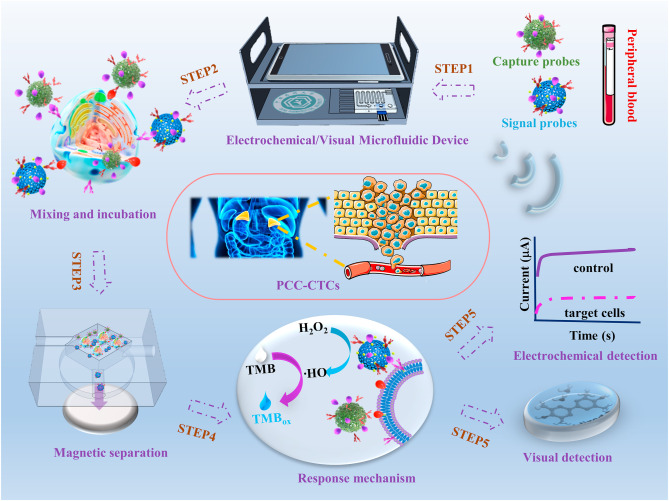Recently, high impact journal Biosensor and Bioelectronics (IF: 10.618) published online the latest research results by the research team of Professor Caolong Li /Associate Professor Fei Wang from CPU School of Science in the field of early diagnosis of pheochromocytoma. Electrochemical/visual microfluidic detection with a covalent organic framework supported platinum nanozyme-based device for early diagnosis of pheochromocytoma - ScienceDirect The first authors are Xiaoya Liu, Class of 2019 Doctoral candidate and Fei Wang, Associate Professor. Professor Caolong Li is the only corresponding author. China Pharmaceutical University is the only corresponding unit of this article.
Pheochromocytoma (PCC) is a rare type of tumor having neuroendocrine function and is characterized by secretion of catecholamine. Because of the low prevalence of this cancer and the inadequate specificity of existing diagnostic techniques, PCC is challenging to diagnose; therefore, exploration of effective and representative biomarkers is essential.
The research team first developed an integrated dual-mode microfluidic device for the rapid and sensitive detection of circulating tumor cells (CTCs). Using meta-iodine guanidine (MIGB)-functionalized magnetic beads as capture probes and octreotide (DOTA)-modified signal probes, which bind specifically to PC12-surface-expressed NET and SSTR2, respectively, PCC-CTCs can be accurately captured and detected in whole blood while providing real-time, specific biomarkers and therapeutic targets for early diagnosis of pheochromocytoma.
Recently, the research team has built an integrated microfluidic device for the rapid detection of PCC-CTCs. The development of smart, portable and sensitive devices for monitoring of circulating tumor cells (CTCs) is critical for the diagnosis of various diseases including pheochromocytoma (PCC). The research team constructed an integrated dual-modality detection device for PCC-CTCs based on microfluidics. The microfluidic device integrates cell incubation, washing and separation, and electrochemical/colorimetric dual-mode detection functions. A smartphone-based three-dimensional (3D)-printed accessory was used for CTC detection signal output and analysis. Related articles have been published in: Biosensor and Bioelectronics, 2022.114208.
This work was supported by the National Key Research and Development Program [grant number 2019YFC0312602].
